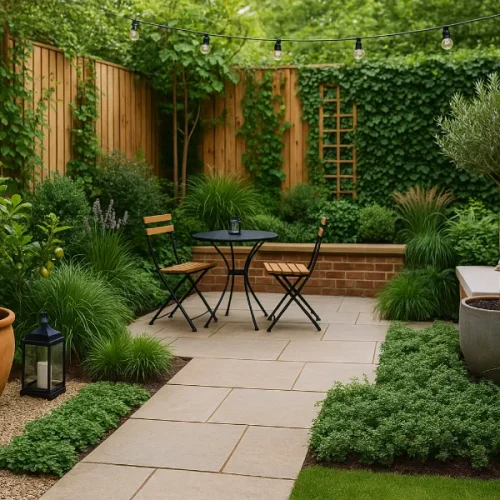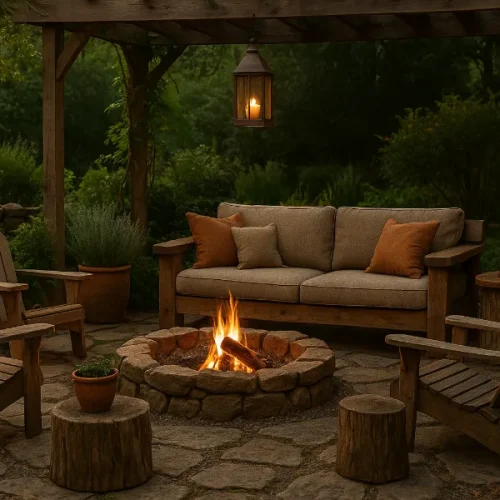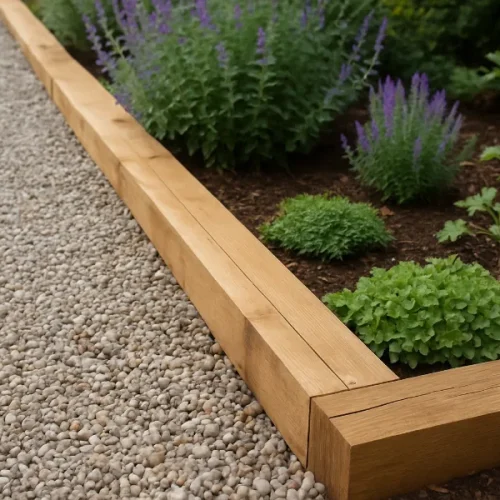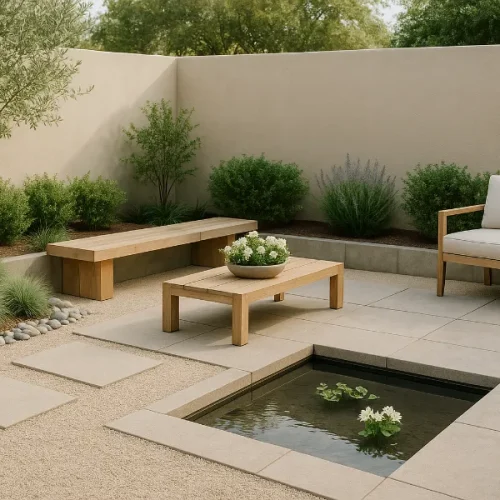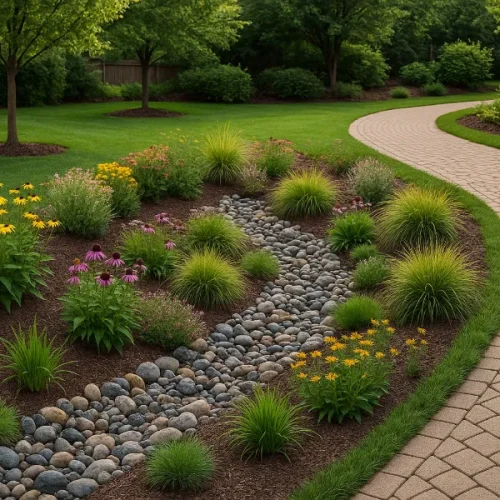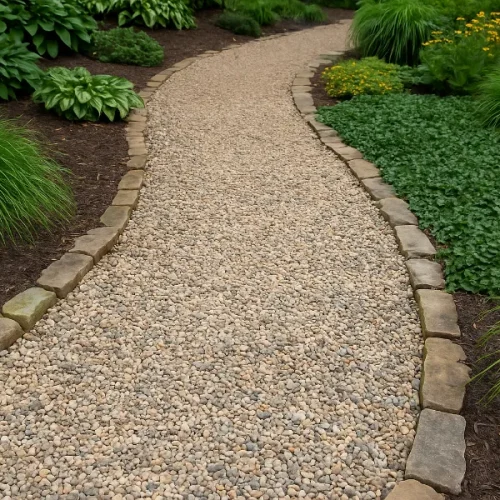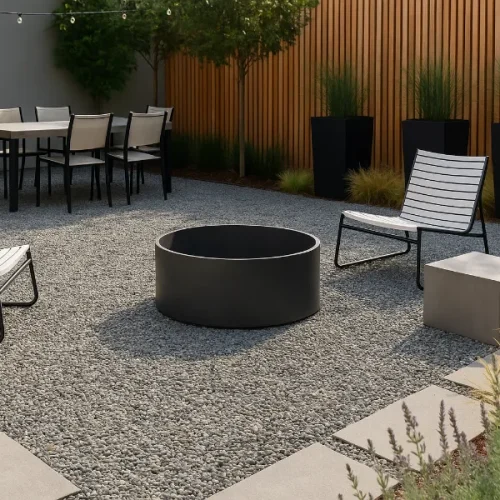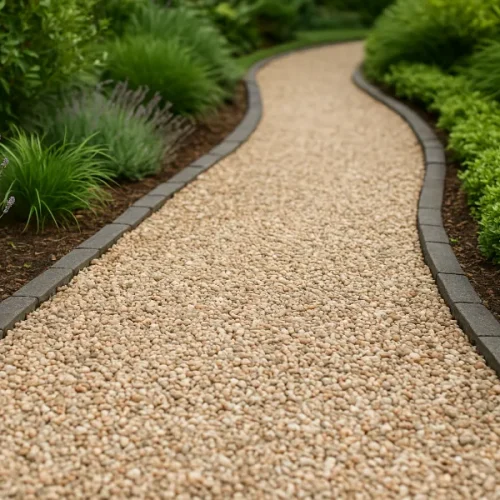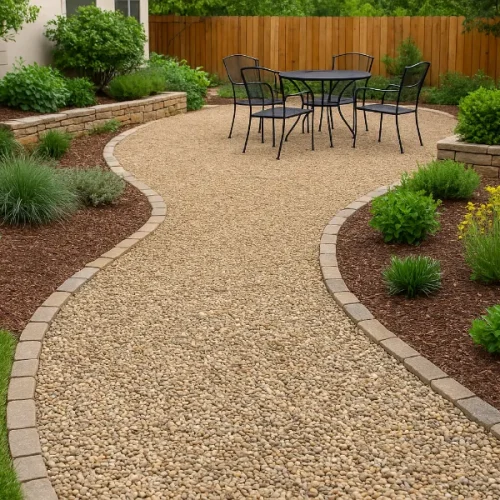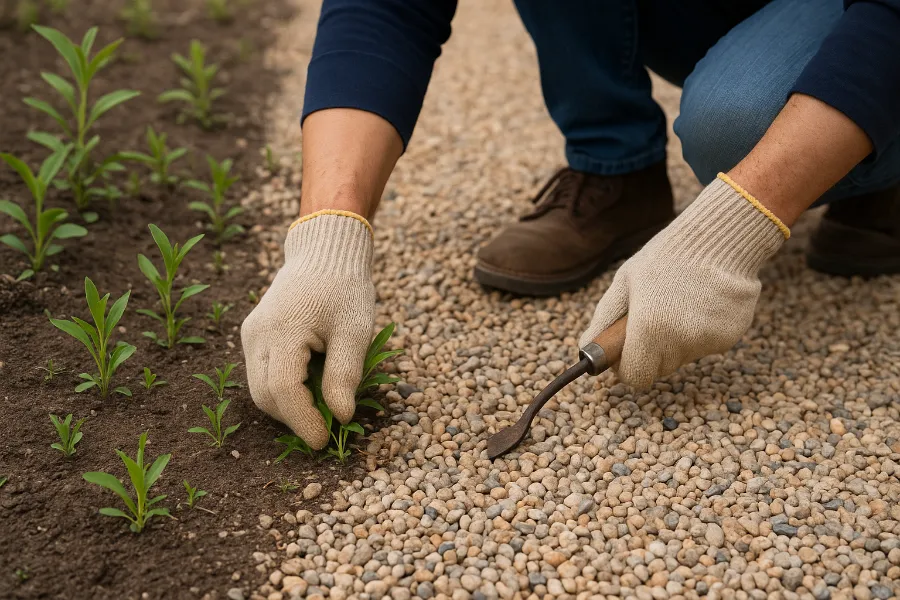
Pea gravel pathways, patios, and garden beds have a quiet charm. They crunch softly underfoot, catch sunlight like small river pearls, and fill outdoor spaces with a relaxed, natural look. But for all their beauty, pea gravel projects come with one inevitable question: how do you keep weeds from popping up through the stones?
Weeds are persistent. Their seeds float in on wind, hide in soil, and wait for moisture and the smallest crack of daylight. If you’ve ever seen a dandelion grow through a concrete sidewalk, you know what they’re capable of. So simply pouring gravel over dirt is not enough. To create a pea gravel space that actually stays clean, stable, and low-maintenance, you need a layered approach.
This guide walks through how weeds grow, why they seem unstoppable, and what truly works to prevent them under pea gravel. Whether you’re starting a new project or struggling with weeds in an existing one, the strategies below will help you build a lasting, weed-resistant foundation.
Understanding Why Weeds Grow Through Pea Gravel
Before you can stop weeds, it helps to understand how they manage to survive under gravel in the first place.
Weeds don’t need deep, rich soil to grow. Many thrive in harsh, compacted, nutrient-poor conditions. When gravel is installed directly over soil, weeds can simply grow upward, using the tiny spaces between stones to shoot toward the light. Even if you start with weed-free ground, airborne seeds will eventually land and settle into the gravel.
A few common reasons pea gravel becomes weed-prone:
- No barrier layer was installed.
- The soil was not cleared or compacted.
- Organic debris settled into the gravel.
- The gravel layer is too thin.
The goal is to make the environment under and within the gravel unfriendly to root development and seed germination.
Step 1: Start with a Clean, Weed-Free Base
If you’re beginning a new pea gravel installation, the most important work happens before a single pebble is poured. Clear the area of existing vegetation, including roots, to prevent regrowth.
Step 2: Compact the Soil
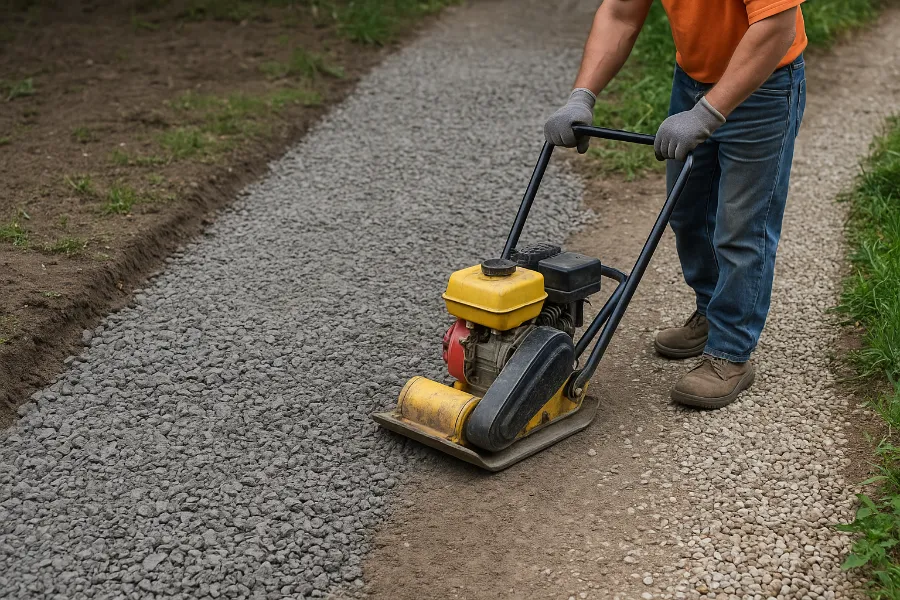
Compacting the soil reduces air pockets and makes sprouting more difficult. Use a plate compactor or hand tamper depending on the project size.
Step 3: Add a Base Layer of Crushed Stone
A 2–3 inch layer of crushed stone creates a strong, well-draining foundation and keeps weeds from accessing the surface layer.
Step 4: Install a Weed Barrier
Landscape fabric helps prevent weeds from pushing through while allowing water to drain. Avoid plastic sheeting, which traps moisture and interferes with drainage.
Tips when applying landscape fabric:
- Overlap by at least 6 inches
- Secure with landscape staples
- Keep fabric smooth and flat
Step 5: Spread a Deep Layer of Pea Gravel
A gravel depth of 2–4 inches prevents sunlight from reaching soil below and makes it harder for weeds to push through.
Step 6: Maintain the Surface
Even the best installation needs small maintenance touches:
- Rake gravel periodically to prevent seed settling
- Remove fallen leaves to avoid organic buildup
- Pull isolated weeds early to prevent root systems from expanding
Natural Weed Prevention Options
Non-chemical options include:
- Boiling water
- Vinegar (especially higher-acidity horticultural vinegar)
- Corn gluten meal to inhibit seed germination
Use salt only in small amounts and away from plants, as it can damage soil long-term.
Using Herbicides (Optional)
Pre-emergent herbicides stop seeds from sprouting. Post-emergent sprays target existing weeds. Always follow label directions and avoid runoff near desirable plants.
What to Do If Weeds Are Already Growing
If an existing gravel area becomes weed-dense, lift and temporarily store the gravel, repair the base layers, and reinstall with landscape fabric. Add fresh gravel if needed.
Why a Layered Method Works
| Layer | Function |
|---|---|
| Compacted soil | Removes voids where roots thrive |
| Crushed stone | Blocks upward growth and supports drainage |
| Landscape fabric | Stops weeds from pushing to surface |
| Pea gravel (2–4 inches) | Blocks sunlight to soil and seeds |
| Light maintenance | Prevents new weed establishment |
This multi-step system creates an environment that weeds simply can’t tolerate.
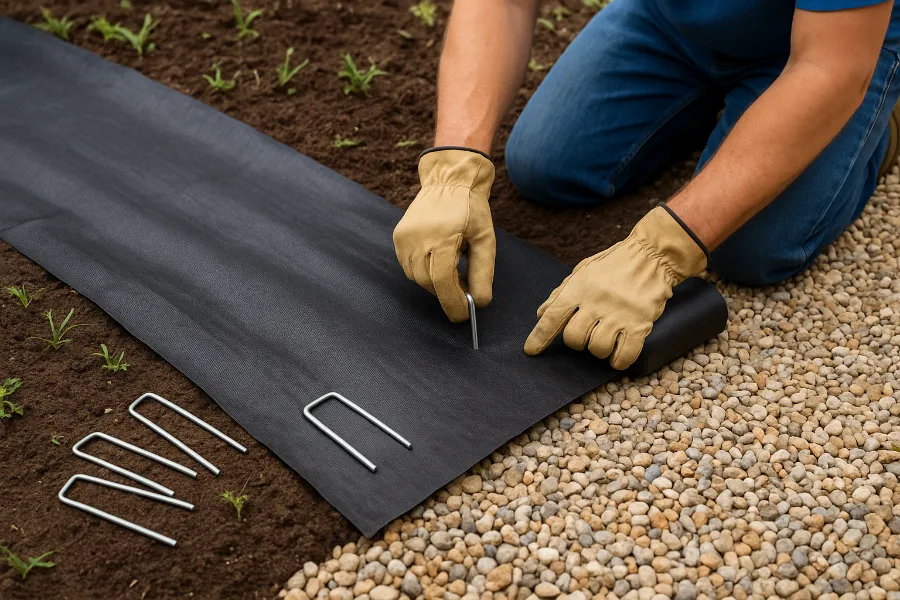
Final Thoughts
Pea gravel can be one of the easiest and most beautiful low-maintenance surfaces in a landscape. The key is doing the groundwork correctly. Clear the base, compact it, add crushed stone, lay high-quality fabric, and apply a deep layer of gravel. Once in place, simple seasonal upkeep keeps the space clean and weed-free.
With the right foundation, pea gravel becomes a peaceful, durable, and effortless part of your outdoor living space.
FAQs
Yes. A high-quality landscape fabric helps block weed roots from pushing through while still allowing water to drain.
Aim for 2–4 inches. A thicker layer blocks sunlight from reaching soil, reducing weed germination.
You can, but weeds will grow quickly. Always clear, compact, and add a base layer first.
Yes. Pouring boiling water directly on weeds destroys their cells and root structure without chemicals.
Vinegar, especially horticultural vinegar, can kill surface weeds, but it may not fully eliminate deep roots.
A compacted layer of crushed stone or decomposed granite helps stabilize the surface and restrict root growth.
Salt can kill weeds but should be used sparingly since it can damage soil and prevent future plant growth.
Yes. They help stop new weeds from sprouting, though they won’t kill existing ones.
Seeds can blow in from above and germinate in the gravel layer, which is why regular surface maintenance matters.
Light raking and debris removal every few weeks helps prevent seeds from settling and growing.


